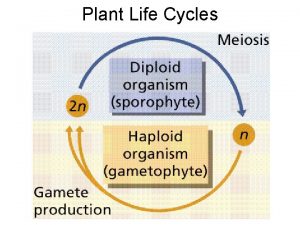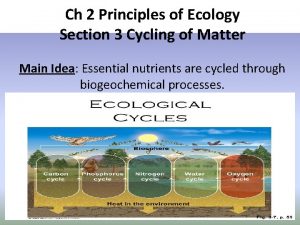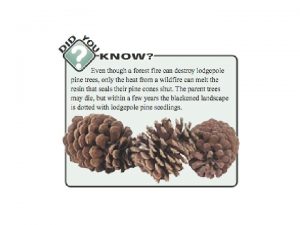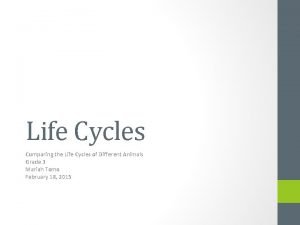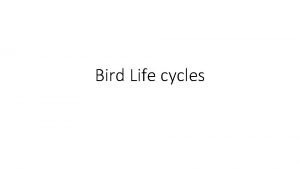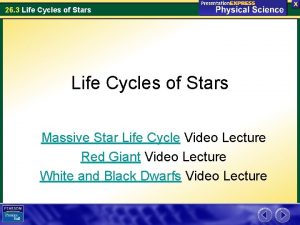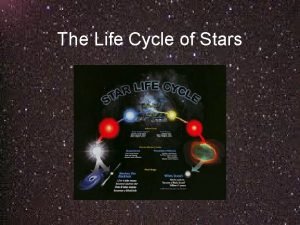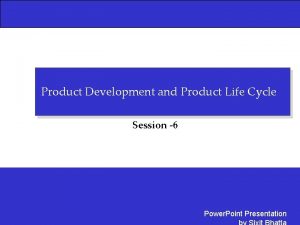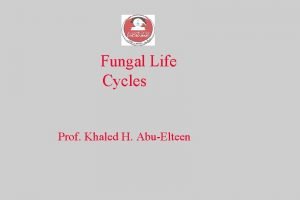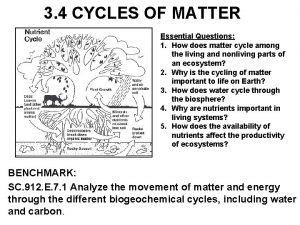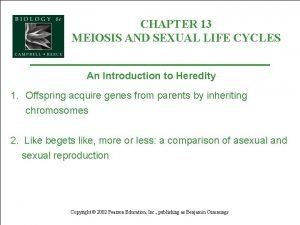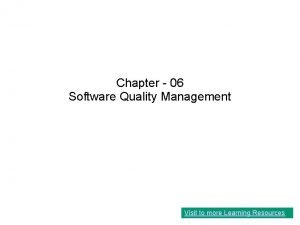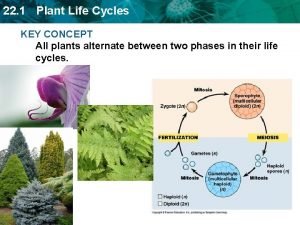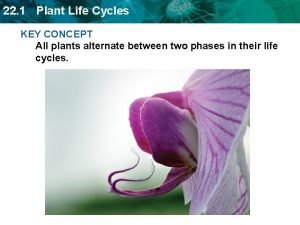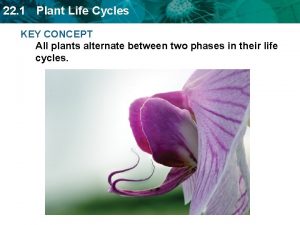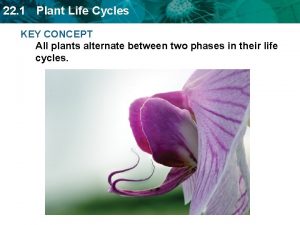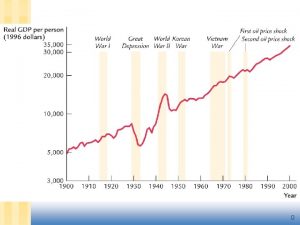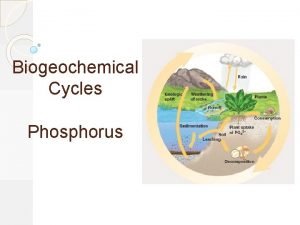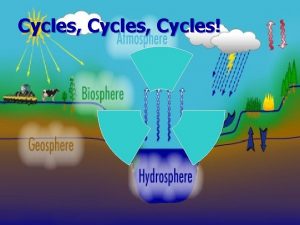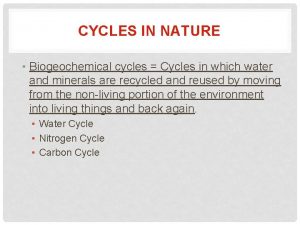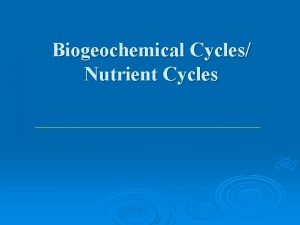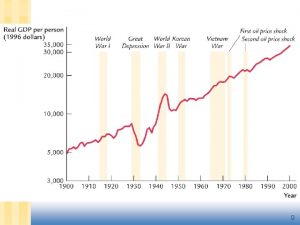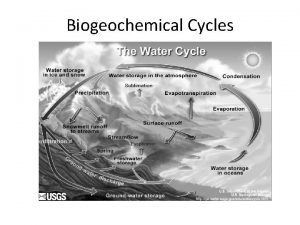22 1 Plant Life Cycles KEY CONCEPT All














- Slides: 14

22. 1 Plant Life Cycles KEY CONCEPT All plants alternate between two phases in their life cycles.

22. 1 Plant Life Cycles Plant life cycles alternate between producing spores and gametes. • A two-phase life cycle is called alternation of generations. – haploid phase – diploid phase – alternates between the two SPOROPHYTE PHASE fertilization meiosis GAMETOPHYTE PHASE

22. 1 Plant Life Cycles • The sporophyte is the dominant phase for seed plants.

22. 1 Plant Life Cycles KEY CONCEPT Reproduction of flowering plants takes place within flowers.

22. 1 Plant Life Cycles Flowers contain reproductive organs protected by specialized leaves. • Sepals and petals are modified leaves. – Sepals are outermost layer that protects developing flower sepal

22. 1 Plant Life Cycles – Petals can help to attract animal pollinators petal

22. 1 Plant Life Cycles • A stamen is the male structure of the flower. stamen filament anther – anther produces pollen grains – filament supports the anther

22. 1 Plant Life Cycles • The innermost layer of a flower is the female carpel. stigma carpel style ovary – stigma is sticky tip – style is tube leading from stigma to ovary – ovary produces female gametophyte

22. 1 Plant Life Cycles Flowering plants can be pollinated by wind or animals. • Flowering plants pollinated when pollen grains land on stigma. • Wind pollinated flowers have small flowers and large amounts of pollen.

22. 1 Plant Life Cycles • Animal pollinated flowers have larger flowers and less pollen. – many flowering plants pollinated by animal pollinators pollen grains – pollination occurs as animal feeds from flower to flower – animal pollination more efficient than wind pollination

22. 1 Plant Life Cycles • Pollination occurs when a pollen grain lands on a stigma. pollen tube sperm stigma

22. 1 Plant Life Cycles • Flowering plants go through the process of double fertilization. female gametophyte egg sperm polar nuclei ovule

22. 1 Plant Life Cycles • Flowering plants go through the process of double endosperm fertilization. – one sperm fertilizes the egg seed coat – other sperm unites with polar nuclei, forming endosperm – endosperm provides food supply for embryo

22. 1 Plant Life Cycles • Each ovule becomes a seed. • The surrounding ovary grows into a fruit.
 Plant life cycles and alternation of generations
Plant life cycles and alternation of generations Lesson 2 cycles of matter answer key
Lesson 2 cycles of matter answer key Practice geochemical cycles answer key
Practice geochemical cycles answer key Alliteration for cycle
Alliteration for cycle Bill nye life cycles
Bill nye life cycles Life cycle of a bird
Life cycle of a bird Life cycle of a star assessment
Life cycle of a star assessment Life cycles of stars
Life cycles of stars Style fashion and fad life cycles
Style fashion and fad life cycles Club fungi life cycle
Club fungi life cycle Chapter 13: meiosis and sexual life cycles
Chapter 13: meiosis and sexual life cycles Precipitation in the water cycle
Precipitation in the water cycle Chapter 13 meiosis and sexual life cycles
Chapter 13 meiosis and sexual life cycles A key concept of quality control is that all work products
A key concept of quality control is that all work products Name all the lines
Name all the lines
